1910-19

1910
Monaco Oceanographic Museum
(Monaco, Monaco) Prince Albert I envisages for the first time in 1885, to create a marine biology laboratory in his Principality. It took 11 years to built present building by Paul Delefortrie.
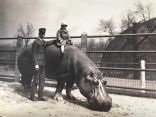
1910
St Louis Zoo
(St Louis Zoo, Missouri, USA) The 1904 St. Louis World's Fair is credited for the birth of the Saint Louis Zoo. The fair brought the world's attention to St. Louis and Forest Park. The Smithsonian Institution constructed a walk-through aviary for the World's Fair. Ten days after the World's Fair closed, the citizens of St. Louis chose to buy the 1904 World's Fair Flight Cage for $3,500, rather than have it dismantled and returned to Washington, DC. This was the first piece of what would become the Saint Louis Zoo. By 1910, increased interest in a zoo brought together some concerned citizens, and they organized the Zoological Society of St. Louis. In 1914, it was incorporated as an independent civic organization of people interested in a zoo. Meanwhile, the citizens of St. Louis and surrounding municipalities expressed diverse opinions as to the appropriate location of a zoo if there should be one. Fairground Park, Carondolet Park, the Creve Coeur area, and Tower Grove Park were some of the places suggested in newspaper articles and letters to the editors and to civic groups. Some concerned citizens residing near Oakland Avenue, south of Forest Park, expressed their displeasure with a zoo in the park because of the smell of the animals. The zoo initially held 51 deer and antelope, 11 buffaloes, a sacred cow, a sandhill crane, 20 prairie dogs, a dromedary camel, eagles, ducks, elk, foxes, geese, swans, rabbits, a raccoon, a China sheep, opossums, a buzzard, owls, and peafowl, among other animals.[8] The head of the Parks Department, Dwight Davis, voiced his opinion against Forest Park—that is, until the city set aside 77 acres (31 ha) in the park in which to establish a zoological park. A five-man board was appointed to act as the Zoological Board of Control.

5th January 1911
Bioparco di Roma
(Roma, Italy) The Biopark was conceived as a zoo in 1908 by a Società Anonima per il Giardino Zoologico, chaired first by Baron Giorgio Sonnino and later by Prince Francesco Chigi. The Society secured the collaboration of Carl Hagenbeck, who in 1907 had revolutionized the architecture of modern zoos with the opening of the Tierpark in Stellingen (Se Hamburg, Germany). The zoo had an area of about 12 hectares and was built in the northern part of Villa Borghese. Work began on 10 May 1909 and ended in October 1910 at a cost of 1,477,147.90 lire. On November 2, the train arrived in Rome carrying the first group of animals from Hamburg destined to populate the various environments prepared for them. The zoo was inaugurated amid great festivities on January 5, 1911. The first director of the facility was the German zoologist Knottnerus-Meyer. The monumental entrance was designed by Armando Brasini.
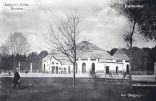
1st August 1911
Tierpark Hellabrunn
(Munich Zoo, Bavaria, Germany) On February 25, 1905, the “Zoological Garden Munich e.V.” association was founded with the aim of building a new zoo in Munich. The Hellabrunn Zoo opened its doors on August 1, 1911. The artistic general plan for the zoo uses the hillside area with Nagelfluh rocks and the floodplain landscape through which the “Auer Mühlbach” flows to enable natural animal husbandry.
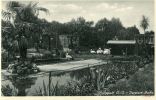
1912
Opole Zoo
(Opole Zoo, Poland) The origins of the garden date back to 1912, when on Bolko island, when a park was being created, part of the area was fenced off, on which a private idyllic area was created for roe deer, peacocks, pheasants and other animals, the sight of which was to be enjoyed by the strolling inhabitants of Opole.

11th May 1912
Tiergarten Nürnberg
(Nuremberg, Bavaria, Germany) Renowned citizens of Nuremberg wanted to set up a zoo based on Hagenbeck's model, with spacious and animal-friendly outdoor spaces, on the site of the Bavarian State Exhibition of 1906 at Luitpoldhain. Since the area had water areas but no elevations, a concrete backdrop was created for mountain animals. The zoo officially opened its doors on May 11, 1912. The rush of visitors quickly filled the coffers and more than 1,200 animals were subsequently presented.
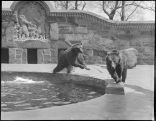
4th October 1912
Franklin Park Zoo
(Boston Zoo, Massachusetts, USA) Frederick Law Olmsted, the original landscape designer of Franklin Park, created plans for a future zoological garden. This plan, however, was to be a naturalistic area for native animals, rather than a traditional zoo. The Franklin Park Zoo officially opened to the public on October 4, 1912. According to plans by Arthur A. Shurtleff, the new zoo represented a major departure from Olmsted's original plans, and included more exotic animals. However, Shurtleff's design for the zoo was modest and was intended to be in harmony with key elements of the plan, such as a half-mile long grassy mall called "the Greeting", which began at Peabody Circle.
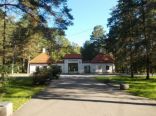
14th October 1912
Riga Zoo
(Riga, Latvia) 200 stockholder creat an association to found a zoo in the Kaiser forest
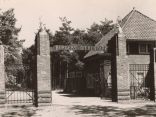
31st March 1913
Koninklijke Burgers' Zoo
(Arnhem, the Netherlands) In 1913 Johan Burgers opened his internationally renowned pheasantry as Faisantarie Buitenlust in his home town of 's-Heerenberg to the public. That was actually the beginning of Burgers' Dierenpark. In 1923, Burgers was given access to a large area in the city of Arnhem where he could put his views (influenced by Carl Hagenbeck) on animal husbandry into practice: the animals - including the predators - not behind bars but in open terraces and in valleys, separated from the public by wide canals.

22nd July 1913
Edinburgh Zoo
(Edinburgh, Scotland, United Kingdom) The Royal Zoological Society of Scotland (RZSS) was founded in 1909, by an Edinburgh lawyer Thomas Gillespie. A visionary and enthusiast, in only four years he garnered sufficient support and funding to enable RZSS to buy an 85 acre site to the west of Edinburgh, for £17,000 with help from the City of Edinburgh Council. Edinburgh Zoo was opened to the public on 22 July 1913, and was incorporated by Royal Charter later that year. However, it was only in 1948, following a visit by HRH King George VI, that the RZSS was granted the privilege of adding the prefix 'Royal' to its name.
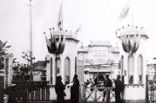
21st September 1913
Uozu Aquarium
(Uozu, Chubu, Japan) The aquarium was established as a venue for the 1913 Eight Prefectures Exhibition in what was then Uozu town of Shimoniikawa District, and was officially opened on the 21st of September, 1913, making it the first aquarium to open on the coast of the Sea of Japan. In 1914, a loss of power lead to the discovery that the Japanese pineapplefish contains luminescent bacteria on each side of its jaw.
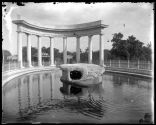
1914
Audubon Park Zoo
(New Orleans Zoo, Louisian, USA) The site of the zoo has housed animal exhibits since the World Cotton Centennial 1884 Exhibition World's Fair, though the current incarnation of the zoo was not built until the early 20th century.
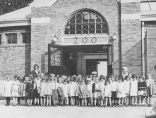
1914
Rosamond Gifford Zoo
(Syracause, New York, USA) In 1900, Lyman Cornelius Smith donated $10,000 and zoological collection to establish a zoo. The first incarnation of the zoo was a small, four acre facility in Burnet Park owned and operated by the Syracuse Department of Parks and Recreation. After opening in 1914, the zoo's first expansion began in 1916 with the construction of stone exhibits for bears and a waterfowl pond.
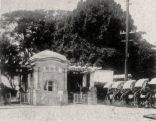
1914
Taipei Zoo
(Taipei, Taiwan) The Taipei Zoo was founded as Maruyama Zoo in april 1914, when Taiwan was under Japanese rule, in Mt. Maruyama (modern-day Yuanshan) on the northern suburb of Taihoku (modern-day Taipei). It was originally a private zoological garden owned by a Japanese citizen, Mr. Oe. The animals came from the cirkus of Mangut Goro that visited the city the winter 1913-14.The Japanese government in Taiwan bought the property the following year and opened it as a public park.
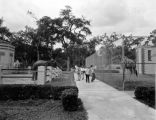
12th May 1914
Jacksonville Zoo & Garden
(Jacksonville, Florida, USA) It all began with one red tail deer, the first exhibited animal in 1914. Located on the corner of 3rd and Broad streets, the then-named Municipal Zoo began when the fawn was gifted to the city. Jacksonville representatives quickly found that there was great interest in showing off the young, hooved animal. The city-owned park wasted little time in adding creatures to its collection and, in less than a year after opening, had bulked up its exhibits, showing off mostly domestic and native animals.

1915
Potter Park Zoo
(Lansing, Michigan, USA) Lansing's zoo originated in 1912 with the donation of 58 acres (23.5 ha) of land to the city by J. W. and Sarah Potter, a prominent Lansing couple, for Potter Park. The James M. Turner estate donated a herd of elk to Lansing in 1915. The city's supervisor of parks, H. Lee Bancroft, initially moved the elk to nearby Moores Park. The same year Charles J. Davis transferred deer to the park, creating the city's first zoo. Moores Park continued to grow, and eventually the elk and deer, along with a bear, two raccoons, and other native animals, were moved to the more spacious Potter Park in 1920.
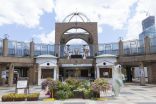
1st January 2015
Tennoji Zoo
(Osaka Zoo, Kinki, Japan) The park's history dates back to 1903 when the site was used for the Fifth National Industrial Exhibition. The zoo came 1915

25th December 1915
Parque de la Biodiversidad
(Cordoba,Argentina) The German -Argentine immigrant José Ricardo Scherer , an experienced naturalist who had carried out zoological and botanical studies on expeditions throughout Europe, Asia, Africa, and America. Scherer, upon settling in the city and being surprised that it did not yet have a zoo, designed a project for its construction, which he presented to Governor Félix T. Garzón in 1912, although he failed to obtain positive results. Subsequently, Scherer himself presented a new project to Governor Ramón José Cárcano, in charge of a new provincial administration. This did manage to be approved with number 4554, series A of December 16, 1914, choosing for its location the area known as "Barranca de los Loros", being called that way because it had been a breeding center. of the Serrano Burrowing Parrot (Cyanoliseus patagonus conlara ), the subspecies of Burrowing Parrot from central Argentina. Its designers and architects thought of exhibiting a collection of the most outstanding animals from the various continents, in a setting of exuberant native vegetation of the Córdoba mountains.

1916
Hirakawa Zoological Park
(Kagoshima Zoo, Kyushu, Japan) Opened 1916 as Kamoike Zoo by a railroad company
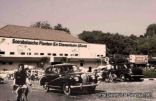
31st August 1916
Surabaya Zoo
(Surabaya, Indonesia) Surabaya Zoo was established by decree of the Governor General of the Netherlands East Indies on 31 August 1916 in Kaliondo as Soerabaiasche Planten-en Dierentuin on the merit of the journalist H. F. K. Kommer who had the hobby of collecting animals.
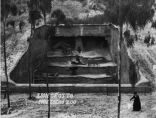
2nd October 1916
San Diego Zoo
(San Diego Zoo, California, USA) The San Diego Zoo grew out of exotic animal exhibitions abandoned after the 1915 Panama–California Exposition. Dr. Harry M. Wegeforth founded the Zoological Society of San Diego, meeting October 2, 1916, which initially followed precedents set by the New York Zoological Society at the Bronx Zoo. He served as president of the society until 1941.

7th October 1916
Taronga Zoo
(Mosman, Australia) The first public zoo in New South Wales (NSW) officially opened in Sydney in 1884 on a site known as Billy Goat Swamp in Moore Park, operated by the Zoological Society of NSW which was founded in March 1879. After a visit to Germany in 1908 the elected Secretary of the zoo, Albert Sherbourne Le Souef, returned with a vision for a new Sydney zoo, based on the bar-less exhibits of Hamburg Zoo. The site at Moore Park had become too small and was not suited to the vision. A new site for the zoo was sought. On April 24th, 1912 the NSW Government granted 43 acres of land north of the harbour which were part of Ashton Park. Another 9 acres were granted in April 1916. In 1913, Management of the zoo passed to a Trust named the New Zoological Gardens Trust which became the Taronga Zoological Park Trust. The first exhibits to be built were the seal ponds, elephant temple, monkey pits, top entrance, aviaries, paths and roadways and the refreshment rooms. In all, 228 mammals, 552 birds and 64 reptiles were moved from Moore Park to Taronga. Many, including the elephants, crossed the harbour on board a flat top barge. Taronga Zoo Sydney was officially opened on October 7th, 1916.
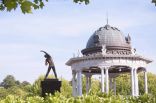
1st April 1918
Higashiyama Zoo & Botanical Garden
(Nagoya Zoo, Chubu, Japan) The first zoological garden in Nagoya was opened in 1918 under the name of “the Nagoya City Tsuruma Park and Zoo” It opened throught Shichigoro Imaizumi, an animal dealer
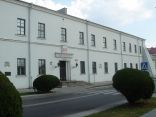
1918
Zamosc Zoo
(Zamosc, Poland) The origins of the garden date back to 1918 , when professor of biology Stefan Miler founded the first school zoo in Poland and one of the few in Europe at the State Men's Junior High School in Zamość, which was located in the building of the former Zamość Academy . The garden located next to the school occupied 10 ares . The first inhabitants of the zoo were turtles and grass snakes , which lived in the central part of the "pond" made of a small cart, which is used in sugar factories to transport beets. The first squirrel cage was created from an Austrian sentry box
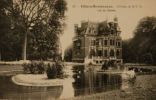
1919
Cleres Zoo
(Cleres, Normandy, France) Jean Delacour, an ornithologist, looked for a property with a lake and old buildings, and set his sights on the Clères estate, which he bought in the summer of 1919. Within a year, he restored the property, dug the pond, built aviaries, and repaired and decorated the castle. At the same time, Henry Avray Tipping, an English landscape architect, arranged the park to accommodate birds and mammals. Soon, the animals roam freely.

1919
Jackson Zoo
(Jackson, Mississippi, USA) The original Zoo consisted of fireman’s pets, squirrels, deer, raccoons, alligators and rabbits. This collection was housed in the Central Fire Station in downtown Jackson (now the Jackson Chamber of Commerce Building).
woaqzo@yahoo.com